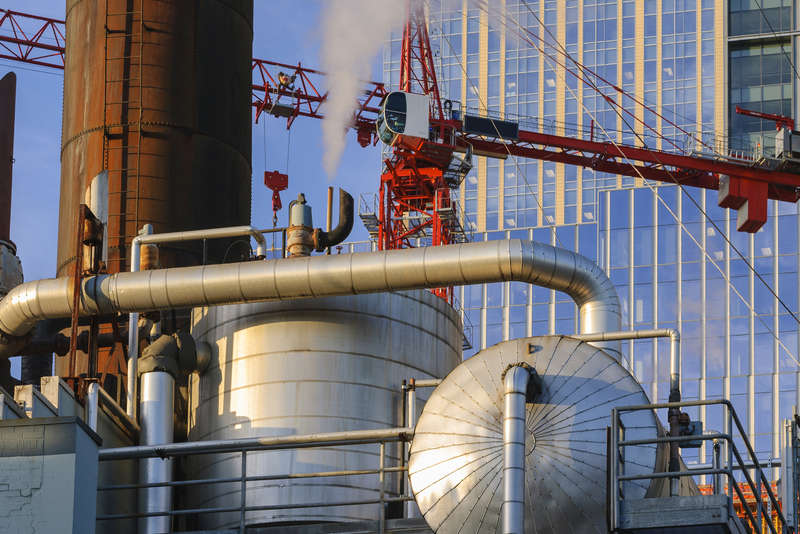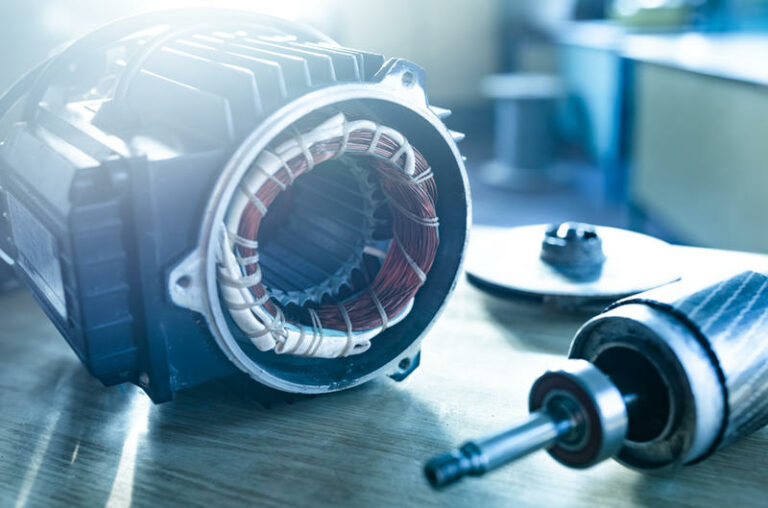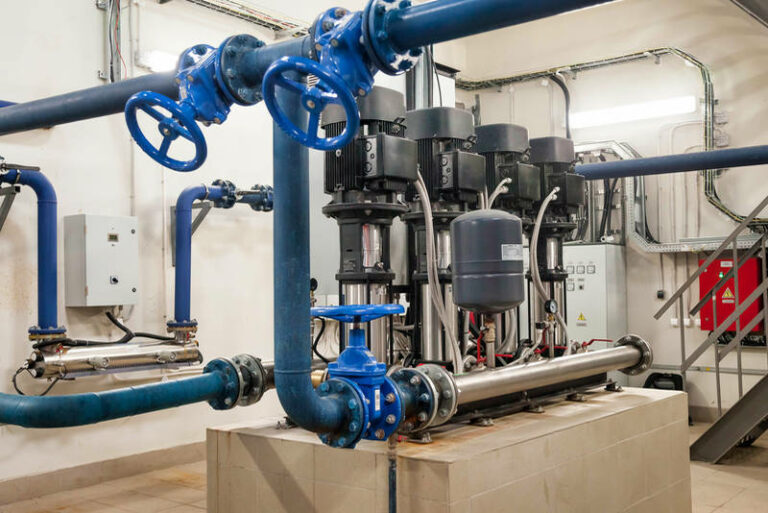Choosing the Right Industrial Pump for Your Application

Choosing the right pump for your application is crucial to ensuring efficiency, reliability, and cost-effectiveness. The process involves understanding the specific requirements of your application, the different types of pumps available, and the factors that influence pump performance and suitability. This guide will walk you through the steps and considerations involved in selecting the right pump for your needs.
Understanding Pump Types
To choose the right pump, it’s essential to understand the various types of pumps available and their unique characteristics. Pumps can be broadly categorized into two main types: centrifugal pumps and positive displacement pumps.
Centrifugal Pumps
Centrifugal pumps use a rotating impeller to impart kinetic energy to the fluid, converting it to pressure energy. These pumps are ideal for low-viscosity fluids and are commonly used in applications requiring high flow rates. There are several types of centrifugal pumps:
- Single-stage Centrifugal Pumps: These pumps have one impeller and are used for low to moderate head applications.
- Multi-stage Centrifugal Pumps: These pumps have multiple impellers in series, allowing them to handle higher heads.
- Axial Flow Pumps: These pumps use an impeller with vanes that push the fluid in an axial direction, suitable for high flow, low head applications.
- Radial Flow Pumps: These pumps have impellers that move fluid radially outward, ideal for high head, low flow applications.
Positive Displacement Pumps
Positive displacement pumps move fluid by trapping a fixed amount and forcing it through the discharge. These pumps are suitable for high-viscosity fluids and applications requiring precise flow control. Types of positive displacement pumps include:
- Reciprocating Pumps: These pumps use a piston or diaphragm to move fluid, ideal for high-pressure applications.
- Rotary Pumps: These pumps use gears, lobes, screws, or vanes to move fluid, suitable for high-viscosity fluids.
- Peristaltic Pumps: These pumps use a rotating mechanism to compress a tube, pushing fluid through it, ideal for sterile or corrosive fluids.
Factors to Consider When Choosing a Pump
When selecting a pump, several factors need to be considered to ensure it meets the specific requirements of your application. These factors include fluid characteristics, flow rate, pressure requirements, environmental conditions, and more.
1. Fluid Characteristics
The properties of the fluid you need to pump play a significant role in determining the type of pump suitable for your application. Consider the following fluid characteristics:
- Viscosity: High-viscosity fluids require positive displacement pumps, while low-viscosity fluids are suitable for centrifugal pumps.
- Density: The density of the fluid affects the power required to move it. Denser fluids require more power.
- Temperature: Extreme temperatures can affect pump materials and performance. Ensure the pump can handle the operating temperature range.
- Chemical Compatibility: If the fluid is corrosive or abrasive, choose a pump with materials resistant to these properties to prevent damage and ensure longevity.
- Solids Content: If the fluid contains solids, select a pump designed to handle solid-laden fluids to prevent clogging and wear.
2. Flow Rate
The required flow rate, measured in gallons per minute (GPM) or liters per minute (LPM), is a critical factor in pump selection. Ensure the pump can deliver the desired flow rate without excessive wear or energy consumption. Consider the following:
- Minimum and Maximum Flow Rates: Determine the range of flow rates needed for your application.
- Steady vs. Variable Flow: Some applications require a constant flow rate, while others may have varying demands. Choose a pump that can handle the required flow variations.
3. Pressure Requirements
The pressure required to move the fluid through the system, measured in pounds per square inch (PSI) or bars, is another crucial factor. Consider the following:
- Suction Head: The vertical distance between the fluid source and the pump. Ensure the pump can handle the required suction head to avoid cavitation.
- Discharge Head: The vertical distance between the pump and the discharge point. Ensure the pump can generate sufficient pressure to overcome the discharge head.
- Total Dynamic Head (TDH): The sum of suction head, discharge head, and friction losses in the system. Ensure the pump can handle the TDH for efficient operation.
4. Environmental Conditions
The operating environment can impact pump performance and longevity. Consider the following environmental factors:
- Ambient Temperature: Ensure the pump can operate within the ambient temperature range of the installation site.
- Humidity and Corrosive Atmospheres: In environments with high humidity or corrosive atmospheres, choose pumps with appropriate coatings or materials to prevent corrosion.
- Space Constraints: Ensure there is adequate space for pump installation, maintenance, and operation.
5. Efficiency and Energy Consumption
Energy efficiency is a critical consideration in pump selection, as it directly impacts operating costs. Look for pumps with high-efficiency ratings and consider the following:
- Pump Efficiency Curves: Review the pump’s efficiency curve to ensure it operates at or near its best efficiency point (BEP) for your application.
- Variable Frequency Drives (VFDs): Consider using VFDs to adjust pump speed based on demand, improving efficiency and reducing energy consumption.
6. Reliability and Maintenance
The reliability and ease of maintenance of the pump are essential for minimizing downtime and reducing maintenance costs. Consider the following:
- Maintenance Requirements: Choose a pump with minimal and straightforward maintenance requirements.
- Spare Parts Availability: Ensure spare parts are readily available to minimize downtime in case of repairs.
- Manufacturer Support: Select a reputable manufacturer with good customer support and service capabilities.
Steps to Choosing the Right Pump
To streamline the pump selection process, follow these steps:
Step 1: Define Application Requirements
Start by clearly defining the requirements of your application, including:
- Type of fluid to be pumped
- Desired flow rate
- Pressure requirements
- Environmental conditions
- Space constraints
Step 2: Identify Suitable Pump Types
Based on the defined requirements, identify the types of pumps that can handle your application. For example:
- For high-viscosity fluids, consider positive displacement pumps.
- For low-viscosity fluids with high flow rates, consider centrifugal pumps.
Step 3: Evaluate Pump Performance Curves
Review the performance curves of the shortlisted pumps to ensure they meet the flow rate and pressure requirements of your application. The performance curve shows the relationship between flow rate and head for a specific pump model. Key points to consider include:
- Best Efficiency Point (BEP): The point at which the pump operates most efficiently. Aim to select a pump that operates close to its BEP for your application.
- NPSH (Net Positive Suction Head): Ensure the available NPSH at your installation site is greater than the required NPSH of the pump to avoid cavitation.
- Power Consumption: Evaluate the power requirements of the pump at various operating points to ensure it aligns with your energy efficiency goals.
Step 4: Consider Material Compatibility
Ensure the pump materials are compatible with the fluid being pumped to prevent corrosion, wear, and failure. Common materials include:
- Cast Iron: Suitable for water and non-corrosive fluids.
- Stainless Steel: Resistant to corrosion and suitable for aggressive fluids.
- Bronze: Good for seawater and marine applications.
- Plastic: Suitable for corrosive chemicals and lightweight applications.
Step 5: Assess Installation and Maintenance Requirements
Evaluate the installation and maintenance requirements of the shortlisted pumps. Consider factors such as:
- Ease of installation: Ensure the pump can be easily installed in the available space.
- Maintenance accessibility: Choose pumps with accessible components for easy maintenance and repairs.
- Availability of spare parts: Ensure spare parts are readily available to minimize downtime.
Step 6: Consult with Experts
Consulting with pump manufacturers, suppliers, or industry experts can provide valuable insights and recommendations. They can help you:
- Validate your pump selection
- Provide detailed performance data and specifications
- Offer technical support and guidance
Step 7: Conduct a Total Cost of Ownership (TCO) Analysis
Perform a total cost of ownership (TCO) analysis to compare the long-term costs of the shortlisted pumps. Consider factors such as:
- Initial purchase cost
- Installation costs
- Energy consumption
- Maintenance and repair costs
- Expected lifespan
Choose the pump that offers the best balance of performance, reliability, and cost-effectiveness for your application.
Case Study: Pump Selection for a Chemical Processing Plant
To illustrate the pump selection process, let’s consider a case study of a chemical processing plant that needs to select a pump for transferring a corrosive chemical.
Application Requirements
- Fluid: Corrosive chemical with a viscosity of 100 cP
- Flow Rate: 50 GPM
- Pressure: 60 PSI
- Ambient Temperature: 70-90°F
- Space Constraints: Limited installation space
Step 1: Identify Suitable Pump Types
Given the corrosive nature of the chemical and its viscosity, a positive displacement pump made of corrosion-resistant materials is suitable. Possible options include:
- Diaphragm Pump: Suitable for corrosive and abrasive fluids.
- Gear Pump: Suitable for high-viscosity fluids and precise flow control.
Step 2: Evaluate Pump Performance Curves
Reviewing the performance curves of diaphragm and gear pumps reveals that both types can meet the required flow rate and pressure. However, the gear pump operates closer to its BEP at the desired operating point, making it a more efficient choice.
Step 3: Consider Material Compatibility
For the corrosive chemical, a gear pump with stainless steel or a corrosion-resistant alloy is appropriate to ensure durability and longevity.
Step 4: Assess Installation and Maintenance Requirements
The gear pump offers easier installation and maintenance access compared to the diaphragm pump, making it more suitable given the limited space and maintenance needs.
Step 5: Conduct a TCO Analysis
A total cost of ownership analysis shows that the gear pump, despite a higher initial cost, offers lower energy consumption and maintenance costs over its lifespan, making it the more cost-effective choice.
Selecting the right pump for your application involves careful consideration of fluid characteristics, flow rate, pressure requirements, environmental conditions, and more. By following a systematic approach, you can ensure you choose a pump that meets your needs, operates efficiently, and offers long-term reliability. Consulting with experts and performing a thorough TCO analysis can further refine your selection, ensuring the best possible outcome for your application.
You can also reach out to us with any questions you have or ask for a quote.






